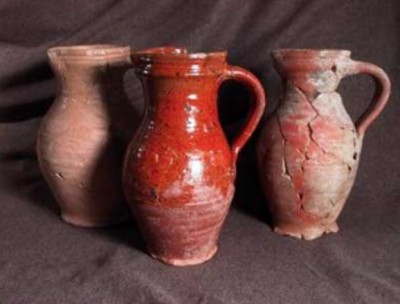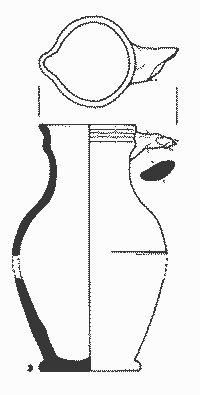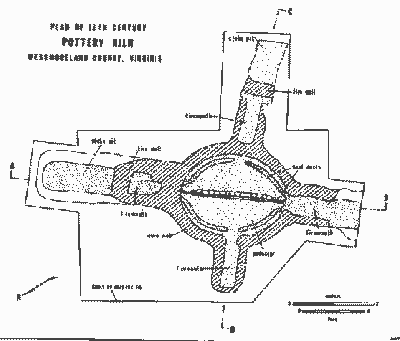Ceramic Pitcher
 Morgan Jones Pottery
Morgan Jones Pottery
 During the 1600s almost all manufactured goods used by Maryland’s settlers were imported from England or Europe. Few craftsmen who settled in the Chesapeake region actually pursued their profession in Maryland. It was generally more profitable to grow tobacco. An exception to this rule is Maryland’s first recorded potter, Morgan Jones.
During the 1600s almost all manufactured goods used by Maryland’s settlers were imported from England or Europe. Few craftsmen who settled in the Chesapeake region actually pursued their profession in Maryland. It was generally more profitable to grow tobacco. An exception to this rule is Maryland’s first recorded potter, Morgan Jones.
Jones immigrated in 1661 as an indentured servant to Robert Sly, one of the most successful merchants in 17th-century Maryland. Sly’s plantation was located near Bushwood on the Wicomico River in St. Mary’s County. When Sly died in 1671, his probate inventory listed a building called a “potthouse” and included a large number of butter pots, milk pans, and porringers (a small bowl form).
 These vessels are wheel-thrown with added strap handles which always terminate with the potters thumb prints where the handles attach. The pitchers are generally fully glazed on the interior but exterior glaze is often spotty or absent.
These vessels are wheel-thrown with added strap handles which always terminate with the potters thumb prints where the handles attach. The pitchers are generally fully glazed on the interior but exterior glaze is often spotty or absent.
After Jones received his freedom he appears to have migrated to Virginia. By 1669 he was running a pottery kiln at Glebe Harbor in Westmoreland County. Jones’ pottery at Glebe Harbor was excavated by archaeologist William Kelso and Edward Chapell in 1973. One of Jones’ business partners while potting in Virginia was John Quigley who later became the principal contractor for building Maryland’s first brick statehouse in 1676.
After a period in Virginia, Morgan Jones appears to have moved to Maryland’s Eastern Shore and settled into the life of a planter
Pottery attributed to Morgan Jones is one of the most common types of ceramics on sites in St. Mary’s City dating to the 1660s and early 1670s. Jones produced earthenware with a lead glaze in brown, tan, and orange colors. Characteristic shapes include pitchers, cups, pans, and small bowls. In addition to St. Mary’s City, examples of his work have been found on a number of 17th century sites in Maryland and Virginia.
Arguably, Jones was not the greatest potter in the world, but in his time he was likely the best (only) practicing potter in Maryland.



